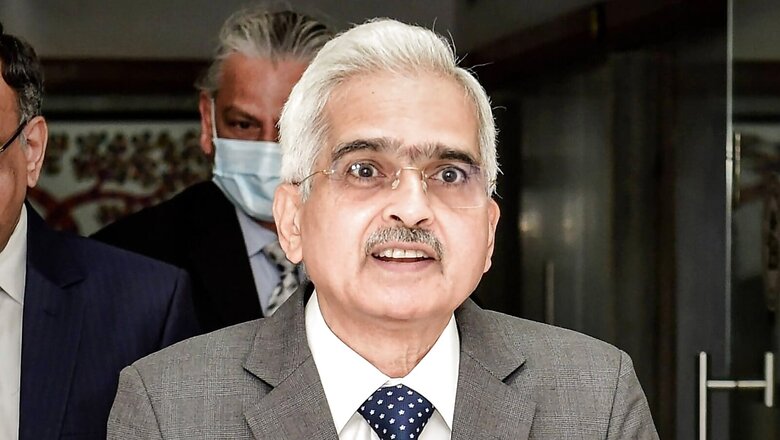
views
RBI Governor Shaktikanta Das on Friday said the depreciation of the Indian rupee in the past few months is more on account of the appreciation of US dollar rather than the weakness in macroeconomic fundamentals of the Indian economy. He added that market interventions by the RBI have helped in containing volatility and ensuring orderly movement of the rupee.
The domestic currency has declined about 8 per cent against the US dollar this calendar year so far. The rupee was at 73.77 against a US dollar on January 12 this year, which has now declined to 79.20 against a dollar. Recently, it touched its all-time low level of 80 per dollar. On Friday, ahead of the RBI’s policy meeting outcome, the rupee appreciated 46 paise to 78.94 against the US dollar in early trade. However, later, it has fallen to 79.20 to a dollar.
While presenting the monetary policy statement, the RBI governor said, “We remain watchful and focused on maintaining stability of the Indian rupee.”
The fall in the rupee in recent months has been attributed to the continuous outflow of foreign investments, surging crude oil prices, tight monetary policy by US Federal Reserve, and general dollar strength. This was aggravated by global uncertainties arising out of a geopolitical crisis due to the Russia-Ukraine war.
Das on Friday said, “The Indian financial system remains resilient. This will help the economy in emerging out of the shadows of the pandemic and the impact of the war in Europe. While the banking system remains well capitalised and profitable, a deleveraged corporate sector augurs well for sustaining the recovery.”
He also said foreign portfolio investment, after remaining in exit mode during the first quarter of 2022-23, turned positive in July 2022. Along with several other measures undertaken in July, the Reserve Bank has also used its foreign exchange reserves accumulated over the years to curb volatility in the exchange rate. Despite the resultant drawdown, India’s foreign exchange reserves remain the fourth largest globally.
Last month, to stabilise the rupee and attract foreign investments, the Reserve Bank of India (RBI) unveiled fresh measures, including easing rules for FPIs, interest rates cap removed for FCNR and NRE term deposits and raising limits on external borrowings.
In its monetary policy review on Friday, the RBI’s Monetary Policy Committee unanimously decided to raise the repo rate by 50 basis points (bps) to 5.4 per cent with immediate effect while focussing on the withdrawal of accommodation. This is the third hike in repo rate in a row after a 40-bp increase in an off-cycle monetary policy review in May and 50 bps in June. The repo rate has now crossed the pre-pandemic level of 5.15 per cent and is the highest since August 2019.
Read the Latest News and Breaking News here




















Comments
0 comment